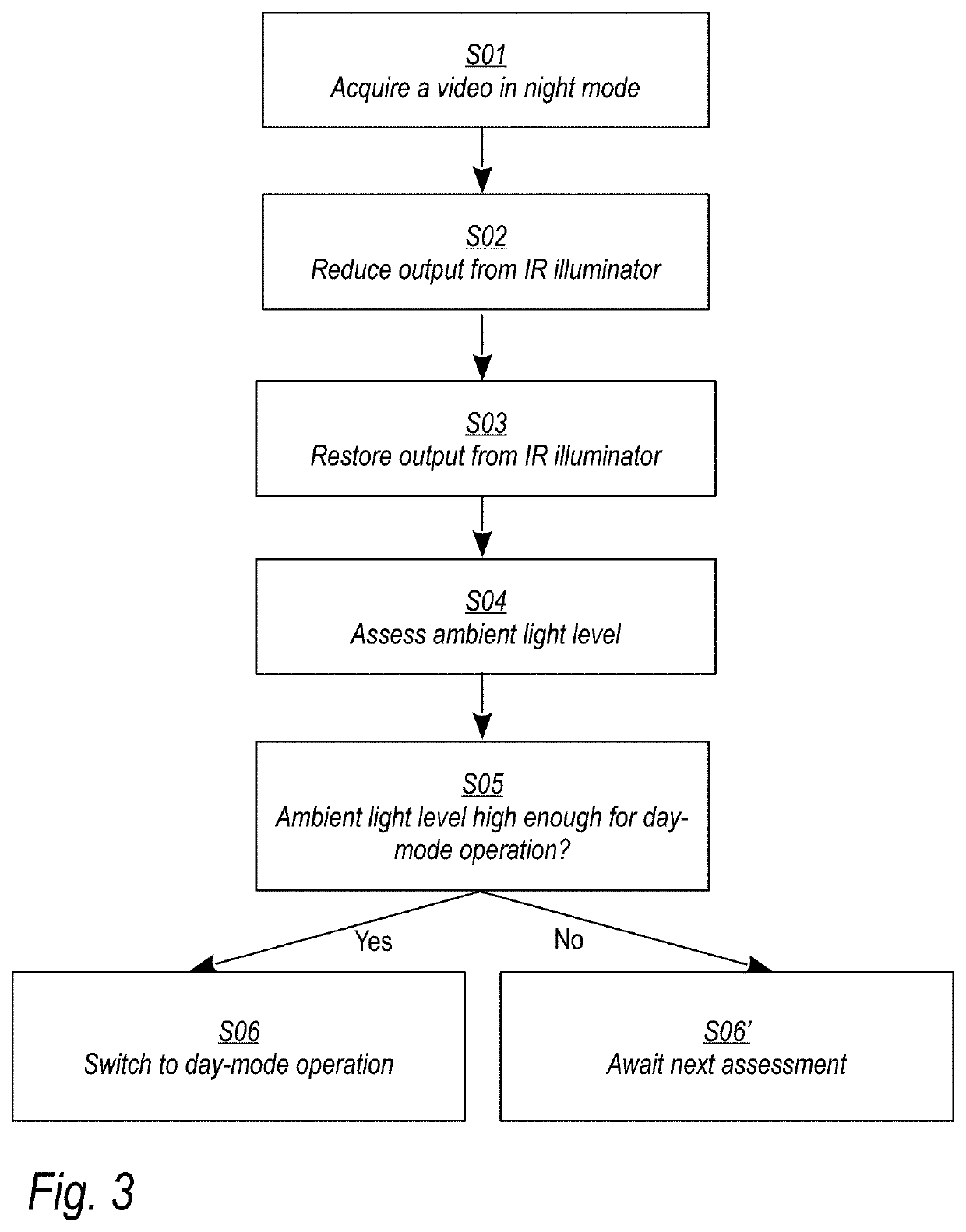Method for assessing ambient light during night mode image acquisition
- Summary
- Abstract
- Description
- Claims
- Application Information
AI Technical Summary
Benefits of technology
Problems solved by technology
Method used
Image
Examples
Embodiment Construction
[0030]FIG. 1 illustrates a camera setup prepared for performing the present invention according to various embodiments thereof. A surveillance camera 10 has an image sensor 12 and imaging optics 14, with an IR-cut filter 16 arranged in front of the image sensor 12. The IR-cut filter 16 is arranged in an actuator so that it can be inserted and retracted from its position in front of the image sensor 12, which is what is done when switching between day-mode operation and night-mode operation.
[0031]Referring briefly to FIG. 2, when the filter is arranged in front of the sensor during day-mode operation the entire IR-portion of the spectrum is removed, meaning that a signal measured by the red, green and blue channel, respectively, may be resolved and converted to a color image. The incident light is separated into different color channels by use of a color filter array arranged in front of, or even combined with, the image sensor. A Bayer filter is a color filter array commonly used fo...
PUM
 Login to View More
Login to View More Abstract
Description
Claims
Application Information
 Login to View More
Login to View More - R&D
- Intellectual Property
- Life Sciences
- Materials
- Tech Scout
- Unparalleled Data Quality
- Higher Quality Content
- 60% Fewer Hallucinations
Browse by: Latest US Patents, China's latest patents, Technical Efficacy Thesaurus, Application Domain, Technology Topic, Popular Technical Reports.
© 2025 PatSnap. All rights reserved.Legal|Privacy policy|Modern Slavery Act Transparency Statement|Sitemap|About US| Contact US: help@patsnap.com


